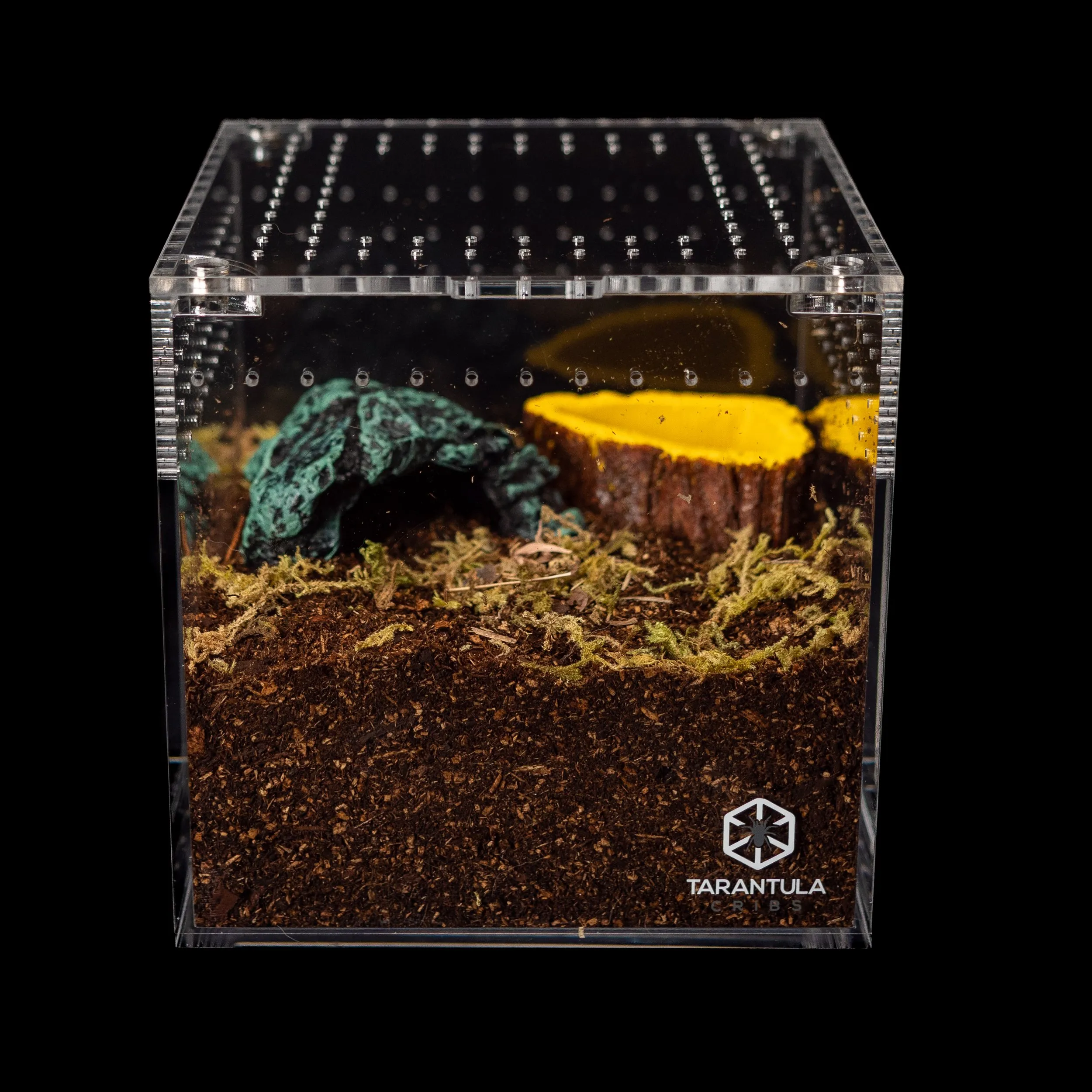Ordering a tarantula online can be an exciting venture for any arachnid enthusiast. With the right knowledge and a bit of preparation, you can successfully bring home a fascinating new pet. This comprehensive guide provides a step-by-step approach to help you navigate the online tarantula market. From selecting a reputable retailer to ensuring your new tarantula’s well-being, we’ve got you covered. Prepare to embark on your tarantula ownership journey with confidence and ease. Before you get started, remember to research the specific tarantula species you are interested in purchasing to make sure it aligns with your experience level and living situation. Taking the time to prepare ensures a smooth transition for both you and your new pet, paving the way for a rewarding and captivating experience. Let’s dive into the essential steps to order your tarantula online safely and responsibly.
Where to Order Tarantulas Online
Finding the right source is the first and most crucial step. The internet is filled with various online retailers, but not all are created equal. It’s essential to choose a reputable seller to ensure you receive a healthy tarantula and a positive experience. Start by exploring specialty reptile and exotic pet retailers, many of which have established online presences. These retailers often have extensive experience with tarantulas and can provide valuable guidance and support. Avoid purchasing from general pet stores that may not have the specialized knowledge needed to care for these unique creatures. Consider breeders, as they frequently have a deep understanding of their tarantulas’ needs and genetics. They often offer a wider variety of species and can answer detailed questions about their animals.
Reputable Online Tarantula Retailers
Identifying reputable retailers involves thorough research. Look for established businesses with positive reviews and testimonials. Explore forums and social media groups dedicated to tarantula keeping; these communities can offer valuable insights into which retailers have earned their trust. Examine their websites for detailed information about their tarantulas, including species, size, sex, and origin. A reputable retailer will prioritize the health and well-being of their tarantulas, offering guarantees and providing clear instructions on care. Check for certifications or affiliations with organizations that promote ethical animal practices. Verify the retailer’s shipping policies and ensure they use appropriate packaging and shipping methods designed for live animals. Read through customer reviews carefully to assess the retailer’s responsiveness and problem-solving capabilities.
Online Tarantula Retailer Reputation

Assessing the retailer’s reputation is paramount. Begin with customer reviews; these provide firsthand experiences, offering insights into the quality of animals, customer service, and shipping practices. Look for patterns in the reviews; are the majority positive, or do negative comments consistently highlight specific issues? Consider the retailer’s presence on social media and forums; active participation in the tarantula community often reflects a commitment to customer satisfaction and animal welfare. Investigate the retailer’s history; a long-standing business is often a sign of reliability. Evaluate the website for a professional appearance, informative content, and clear contact information. A reputable retailer will be transparent about their practices and willing to address any concerns. Always check with the Better Business Bureau (BBB) or similar organizations for any complaints or unresolved issues.
What to Look for in an Online Tarantula Retailer
When evaluating potential retailers, look for specific qualities that indicate professionalism and care. The retailer should provide detailed information about each tarantula, including its species, size, sex (if known), and origin. They should also include clear photographs or videos of the tarantulas, allowing you to assess their health. A good retailer offers a health guarantee, covering any issues that may arise shortly after arrival. Their website should have clearly defined shipping policies and offer shipping options suitable for live animals. They should use insulated packaging and temperature-controlled methods to protect the tarantulas during transit. The retailer should also provide care sheets or detailed instructions on how to care for the tarantula. Excellent customer service is essential, with the retailer readily available to answer your questions and address any concerns promptly. Finally, they should be transparent about their business practices.
Tarantula Species Selection
Choosing the right tarantula species is a critical decision. Consider your experience level and the amount of care you can provide. Some species are better suited for beginners, being less defensive and requiring less specialized care. Research the specific needs of each species, including their natural habitat, diet, and temperament. Consider the size of the tarantula, as some species can grow quite large and require a spacious enclosure. Evaluate the tarantula’s venom potency and defense mechanisms, such as urticating hairs. Consider your personal preferences, such as the tarantula’s appearance and activity level. Some tarantulas are more colorful or active than others. Always ensure the species you choose is legal to own in your area, as regulations can vary. Once you narrow down your choices, delve deeper into the specific care requirements of each species.
Choosing the Right Tarantula Species

For beginners, it’s best to start with docile, easy-to-care-for species, such as the Chilean Rose Hair (Grammostola rosea), the Pinktoe Tarantula (Avicularia avicularia), or the Mexican Red Knee (Brachypelma hamorii). These species are typically more tolerant of handling, less prone to aggression, and have relatively simple care requirements. Research their specific needs, including their ideal temperature, humidity levels, and dietary preferences. Intermediate keepers may consider species like the Gooty Sapphire Ornamental (Poecilotheria metallica) or the Cobalt Blue Tarantula (Cyaneopubescens), but these species have more specific requirements. For advanced keepers, there are numerous exotic species available. Always prioritize species that match your experience, ensuring the tarantula’s well-being. Remember, responsible pet ownership requires careful research and a commitment to providing the best possible care. Always prioritize the tarantula’s well-being and ensure that you can provide it with a suitable environment and proper care.
Considerations Before Buying
Before ordering a tarantula, consider several important factors to ensure a smooth experience. Assess your living situation; do you have enough space for the enclosure and the required equipment? Ensure you have the financial resources to provide proper care, including food, substrate, and enclosure upgrades. Research the species’ lifespan; tarantulas can live for many years, so this is a long-term commitment. Make sure you are not allergic to spiders or have any phobias that could affect your ability to care for the tarantula. Understand your local laws and regulations regarding exotic pets. Ensure that the species you are considering is legal to own in your area. Finally, prepare for any unexpected issues, such as illness or escape. Have a plan in place to handle such situations. Being well-prepared ensures a successful tarantula ownership experience.
Tarantula Enclosure and Setup
Setting up the proper enclosure is essential for your tarantula’s well-being. The size of the enclosure should match the size and species of your tarantula. Juvenile tarantulas can start in smaller enclosures, while larger species require more spacious setups. Choose a terrarium made of glass or acrylic with secure ventilation. Consider the tarantula’s lifestyle; terrestrial species need more floor space, while arboreal species require height for climbing. Ensure the enclosure is escape-proof, with a secure lid. Provide a substrate appropriate for the species, such as coconut fiber or peat moss, which will retain humidity. Include hides, such as cork bark or artificial plants, for the tarantula to feel secure. Maintain the appropriate temperature and humidity levels for the species. Use a thermometer and hygrometer to monitor the environment. Always keep the enclosure clean by removing uneaten food and waste regularly.
Setting Up Your Tarantula Enclosure

For terrestrial tarantulas, provide a substrate that is several inches deep to allow for burrowing. Arboreal tarantulas require a taller enclosure with vertical climbing structures, such as branches and cork bark. Ensure the enclosure has proper ventilation to prevent mold growth, but avoid excessive airflow that could dry out the enclosure. Place the enclosure in a location away from direct sunlight, drafts, and excessive noise. Provide a water dish with fresh water. The size of the dish should be appropriate for the tarantula, and it should be shallow to prevent drowning. Consider adding live or artificial plants to enhance the enclosure’s environment and provide additional hiding places. Maintaining a clean and enriching environment promotes the tarantula’s health and well-being. Regularly inspect the enclosure for any signs of illness or distress in your tarantula, and make adjustments as needed.
Essential Supplies for Your Tarantula
To properly care for your tarantula, you’ll need specific supplies. The enclosure itself is the most important item, as discussed. You’ll need appropriate substrate to line the enclosure and maintain humidity, such as coconut fiber, peat moss, or a substrate mix. A water dish is essential to provide a constant source of fresh water. Thermometers and hygrometers are crucial for monitoring the temperature and humidity levels. Hides, such as cork bark or artificial plants, provide the tarantula with security and a place to retreat. You will also need feeding tongs to safely offer food to the tarantula. A spray bottle is necessary to mist the enclosure and maintain humidity. A small container or cup for holding water, especially for slings, can be useful. Prepare a first-aid kit, which might include antiseptic solutions or other remedies. Ensure you have a plan for waste disposal. These essential supplies are critical to providing a healthy and enriching environment for your tarantula.
Shipping and Delivery of Tarantulas
The shipping process is a critical aspect of ordering a tarantula online. Reputable retailers prioritize the safety of the tarantula during transit. They typically ship tarantulas in insulated containers, often with heat or cold packs, depending on the weather conditions. The tarantula is usually placed in a small, secure container with adequate ventilation. The retailer will select shipping methods to minimize transit time, often using overnight or express services. You’ll receive a tracking number to monitor the package’s progress. Upon arrival, it’s crucial to be prepared to receive the package promptly. Inspect the package for any signs of damage and immediately contact the retailer if you find any issues. The goal is to ensure that the tarantula arrives safely and with minimal stress.
Shipping Methods and Timeframes

Most retailers ship tarantulas via overnight or express delivery services to minimize the time the tarantula spends in transit. The shipping method will depend on the retailer, the weather conditions, and the distance. The retailer typically provides a tracking number, allowing you to monitor the shipment’s progress and anticipate the delivery. Delivery times are generally short, often between 12 and 24 hours. During extreme weather conditions, shipping may be delayed to ensure the tarantula’s safety. Always confirm the shipping details and expected delivery time with the retailer before placing your order. Be prepared to receive the package as soon as it arrives. Ensure someone is available to receive the package and bring it indoors promptly to prevent any temperature-related issues.
What to Do Upon Arrival
Upon receiving your tarantula, handle it with care. Inspect the packaging and the tarantula for any signs of damage or distress. If you notice any issues, contact the retailer immediately. Allow the tarantula to acclimate to its new environment by placing the container directly inside its enclosure. Leave the container closed for a few hours to allow the tarantula to settle. Provide fresh water by refilling the water dish. Avoid handling or disturbing the tarantula for the first few days, as it needs time to adjust to its new surroundings. After a few days, you can begin feeding the tarantula. Introduce the appropriate-sized insects. Observe the tarantula for any signs of illness or stress, such as lethargy or loss of appetite. Contact the retailer or a veterinarian if you have any concerns.
Caring for Your New Tarantula
Caring for your tarantula involves several key aspects, including feeding, watering, and maintaining a suitable environment. The specific requirements will vary depending on the species, so always research the needs of your particular tarantula. Feed your tarantula an appropriate diet of insects, such as crickets, roaches, or mealworms. The size of the insects should be proportionate to the tarantula’s size. Provide fresh water in a shallow dish at all times. Maintain the correct temperature and humidity levels for the species. Clean the enclosure regularly by removing uneaten food, waste, and other debris. Avoid handling the tarantula unless necessary. Handle with great care to avoid accidental bites. Provide a secure and enriching environment to minimize stress and promote well-being. Regularly observe the tarantula for signs of illness or distress.
Feeding and Watering Your Tarantula

Feeding and watering are essential aspects of tarantula care. The frequency of feeding depends on the tarantula’s age, species, and metabolism. Young tarantulas (slings) typically require more frequent feeding, while adults can be fed less often. Offer live insects that are appropriately sized for your tarantula; the insect should be no larger than the tarantula’s abdomen. Remove any uneaten insects within 24 hours to prevent them from bothering the tarantula. Provide fresh water in a shallow dish at all times. Refill the water dish regularly, and ensure it is kept clean. Avoid using tap water, as it may contain harmful chemicals; distilled or bottled water is a safer alternative. Observe the tarantula’s feeding habits to ensure it’s eating properly, and adjust the feeding schedule accordingly. Ensure that your tarantula is always properly hydrated by providing access to clean water.
Handling Your Tarantula
Handling tarantulas is generally not recommended, as it can be stressful for the tarantula and potentially dangerous for the handler. Tarantulas can bite if they feel threatened, and some species have potent venom. Some tarantulas also possess urticating hairs, which can cause irritation upon contact. If handling is necessary, do so with extreme caution and only when the tarantula is calm. Never handle a tarantula if you are nervous or unsure. Avoid touching or harassing the tarantula. If the tarantula becomes agitated, gently place it back in its enclosure. Always wash your hands thoroughly before and after handling. Consider the tarantula’s well-being above all else, and prioritize observation over interaction.
Potential Problems and Solutions
Owning a tarantula can bring potential problems, but with preparation, you can address them effectively. Common issues include molting problems, such as failure to molt or incomplete molts. In these cases, increasing humidity and providing a safe environment can help. Another issue can be escape; to solve this, ensure the enclosure is escape-proof and maintain a secure lid. Health issues, such as mites or parasites, can occur; these often require treatment by a veterinarian experienced with exotic animals. Lack of appetite can be a sign of stress or illness; ensure the environment is correct and adjust care accordingly. By understanding common problems and preparing for potential issues, you can ensure a healthy and fulfilling experience of tarantula ownership.
Common Tarantula Health Issues

Tarantulas can experience several health issues that require attention. One common problem is molting issues, where the tarantula struggles to shed its exoskeleton. This can be caused by low humidity or a stressful environment. Another common issue is parasites, such as mites, which can infest the tarantula and its enclosure. Respiratory infections can occur, often due to improper humidity levels or poor ventilation. Injuries, such as leg loss, can happen, especially if the tarantula falls or is mishandled. Fungal infections may result from unsanitary enclosure conditions or inadequate ventilation. If you notice any signs of illness, consult a veterinarian experienced with exotic animals immediately. Early diagnosis and treatment are critical for the tarantula’s recovery. Preventative measures such as proper enclosure setup and maintenance, balanced diet, and proper sanitation are the best approaches.
Preventing Escape and Ensuring Safety
Preventing escape and ensuring safety are paramount when owning a tarantula. Ensure your tarantula’s enclosure is escape-proof. Use a terrarium with a secure lid and secure ventilation. Inspect the enclosure regularly for any potential escape routes. Keep the enclosure away from areas where it could be accidentally knocked over. If the tarantula escapes, remain calm, and carefully search for it. Use a container to capture the tarantula and return it to its enclosure. Teach children and other household members about the tarantula and the importance of not disturbing it. Supervise any interaction with the tarantula. Keep the enclosure in a secure area away from pets. Follow these safety precautions to create a secure and safe environment for both you and your tarantula.
In conclusion, ordering a tarantula online can be a rewarding experience with careful planning and responsible practices. By following these steps, you can safely acquire a healthy tarantula and provide it with the best possible care. Always prioritize the tarantula’s well-being, and enjoy the fascinating journey of tarantula ownership. Remember, research, patience, and a commitment to providing a suitable environment are the keys to success. Enjoy the process, and welcome your new, eight-legged friend to your home.
